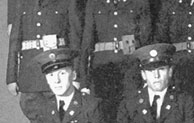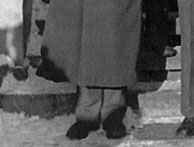| North
High School Wall of Honor Robert Eric Eckman Class of June, 1927 |
 |
|||||||||||||||||||||||||||||||||||||||||||||||||||||||||||||||||||||||||||||||||||||||||||||||||||||||||||||||||||||||||||||||||||||||||||||||||||||||||||||||||||||||||||||||||||||||||||||||||||||||||||||||||||||||||||||||||||||||
| Research done by Claradell Shedd, Class of 1953. | ||||||||||||||||||||||||||||||||||||||||||||||||||||||||||||||||||||||||||||||||||||||||||||||||||||||||||||||||||||||||||||||||||||||||||||||||||||||||||||||||||||||||||||||||||||||||||||||||||||||||||||||||||||||||||||||||||||||||
| Robert Eric Eckman | ||||||||||||||||||||||||||||||||||||||||||||||||||||||||||||||||||||||||||||||||||||||||||||||||||||||||||||||||||||||||||||||||||||||||||||||||||||||||||||||||||||||||||||||||||||||||||||||||||||||||||||||||||||||||||||||||||||||||
|
Bob graduated in the June, 1927 North High class. He enlisted at the Memorial Armory, East First Street, Des Moines, IA. His service number was 0408449. Bob's next of kin was listed as Mrs. Rhoda Amelia Johnson Davis, street address, Des Moines, IA. |
||||||||||||||||||||||||||||||||||||||||||||||||||||||||||||||||||||||||||||||||||||||||||||||||||||||||||||||||||||||||||||||||||||||||||||||||||||||||||||||||||||||||||||||||||||||||||||||||||||||||||||||||||||||||||||||||||||||||
|
||||||||||||||||||||||||||||||||||||||||||||||||||||||||||||||||||||||||||||||||||||||||||||||||||||||||||||||||||||||||||||||||||||||||||||||||||||||||||||||||||||||||||||||||||||||||||||||||||||||||||||||||||||||||||||||||||||||||
| 34th Infantry Division The 34th Infantry Division ("Red Bull") is a division in the Army National Guard that participated in World War I and World War II. It was the first U.S. division deployed to Europe in World War II.[2] The division was deactivated in 1945, and the 47th "Viking" Infantry Division later created in the division's former area. In 1991 the 47th Division was redesignated the 34th. In common with other U.S. Army divisions the 34th was reorganized from a square to a triangular division before seeing combat. The division's three infantry regiments became the 133rd, 135th, and 168th Infantry Regiments. On 8 January 1942, the 34th was transported by train to Fort Dix, New Jersey to quickly prepare for overseas movement. The first contingent embarked at Brooklyn on 14 January 1942 and sailed from New York the next day. The initial group of 4,508 stepped ashore at 12:15 hrs on 26 January 1942 at Dufferin Quay, Belfast. They were met by a delegation including the Governor (Duke of Abercorn), the Prime Minister of Northern Ireland (John Miller Andrews), the Commander of British Troops Northern Ireland (General G. E. W. Franklyn), and the Secretary of State for Air (Sir Archibald Sinclair). While in Northern Ireland, Hartle was tasked with organizing an American version of the British Commandos, a group of small "hit and run" forces, and promoted his Aide-de-camp, artillery Captain William O. Darby to lead the new unit.[15] Major Darby assembled volunteers, and of the first 500 Rangers, 281 came from the 34th Infantry Division. On 20 May 1942, Hartle was designated commanding general of V Corps and Major General Charles Ryder took command of the 34th. The division trained in Northern Ireland until it boarded ships to travel to North Africa for Operation Torch in November 1942. The 34th Infantry Division saw its first combat in French Algeria on 8 November 1942. As a member of the Eastern Task Force, which included two brigades of the British 78th Infantry Division, and two British Commando units, they landed at Algiers and seized the port and outlying airfields. Elements of the Division took part in numerous subsequent engagements in Tunisia during the Allied build-up, notably at Sened Station,[16] Sidi Bou Zid and Faid Pass, Sbeitla, and Fondouk Gap.[17] In April 1943 the division assaulted Hill 609, capturing it on 1 May 1943, and then drove through Chouigui Pass to Tebourba and Ferryville.[18] The Battle of Tunisia was won, and the Axis forces surrendered. The Red Bull in the Winter Line of Pantano, Italy – 29 November to 3 December 1943. The division then trained for the inception of the Allied Invasion of Italy (Operation Avalanche), beginning with the Salerno landing. The 151st Field Artillery Battalion went in on D-day, 9 September 1943, at Salerno, while the rest of the division followed on 25 September. Engaging the enemy at the Calore River, 28 September 1943, the 34th, as part of the U.S. II Corps, relentlessly drove north to take Benevento, crossed the winding Volturno three times in October and November, assaulted Monte Patano, and took one of its four peaks before being relieved, 9 December 1943. In January 1944, the division was back on the front line battering the Bernhardt Line defenses. Persevering through bitter fighting along the Mignano Gap, the 34th used goat herds to clear the minefields. The 34th took Monte Trocchio without resistance as the German defenders withdrew to the main prepared defenses of the Gustav Line. On 24 January 1944, during the First Battle of Monte Cassino they pushed across the Rapido River into the hills behind and attacked Monastery Hill which dominated the town of Cassino. While they nearly captured the objective, in the end their attacks on the monastery and the town failed. The performance of 34th Division in the mountains has been called one of the finest feats of arms carried out by any soldiers during the war. The unit sustained losses of about 80 per cent in the infantry battalions. They were relieved from their positions 11–13 February 1944. Eventually, it took the combined force of five allied infantry divisions to finish what the 34th nearly accomplished on its own. Full color shoulder sleeve insignia (SSI) formerly worn on a unit member's dress uniform. After rest and rehabilitation, the 34th landed at the Anzio beachhead 25 March 1944. The division maintained defensive positions until the offensive of 23 May, when it broke out of the beachhead, took Cisterna, and raced to Civitavecchia and Rome. After a short rest, the division drove across the Cecina River to liberate Livorno, 19 July 1944, and continued on to take Monte Belmonte in October during the fighting on the Gothic Line. Digging in south of Bologna for the winter, the 34th jumped off, 15 April 1945, and captured Bologna on 21 April. Pursuit of the routed enemy to the French border was halted on 2 May upon the German surrender in Italy. On 27 June 1944 the 16th SS-Panzer Grenadiers command post in San Vincenzo, Italy was overrun by the 1st Battalion, 133rd Infantry, 34th Division. The command post was a town centre apartment which had been commandeered, when the owners returned to their apartment they found a signed large leather bound Stieler's Hand Atlas which had been left behind; more on this story here http://generalheinrichvonvietinghoff.wordpress.com/ Subdued shoulder sleeve insignia (SSI) currently worn on a unit member's Army Combat Uniform. The division participated in six major Army campaigns in North Africa and Italy. The division is credited with amassing 517 days of front-line combat, more than any other U.S. division. One or more 34th Division units were engaged in actual combat with the enemy on 611 days. The 1st Battalion, 133rd Infantry and the Ironman battalion still holds the record over the rest of the United States Army for days in combat. The division was credited with more combat days than any other division in the war. The 34th Division suffered 3,737 killed in action, 14,165 wounded in action, and 3,460 missing in action, for a total of 21,362 battle casualties. Casualties of the division are considered to be the highest of any division in the theatre when daily per capita fighting strengths are considered. The division's soldiers were awarded ten Medals of Honor, ninety-eight Distinguished Service Crosses, one Distinguished Service Medal, 1,153 Silver Stars, 116 Legion of Merit medals, one Distinguished Flying Cross, 2,545 Bronze Star Medals, fifty-four Soldiers' Medals, thirty-four Air Medals, with duplicate awards of fifty-two oak leaf clusters, and 15,000 Purple Hearts. Oflag 64: Oflag 64 was a World War II German prisoner-of-war camp for officers located at Sczubin a few miles south of Bydgoszcz, in Pomorze, Poland, which at that time was occupied by Nazi Germany. It was probably the only German POW camp set up exclusively for U.S. Army ground component officers. At most other camps there were several nationalities, although they were usually separated into national compounds. The camp was built around a Polish boys' school by
adding barracks. Initially it was Stalag XXI-B for Polish soldiers
until December 1940. It then it became Oflag XXI-B for French and
British Commonwealth officers, subsequently for Soviet officers until
June 1943. They were then moved out to other camps, the Commonwealth
flying personnel to Stalag Luft III Sagan, others to Oflag XXI-C Ostrzeszów.
It was then re-numbered |
||||||||||||||||||||||||||||||||||||||||||||||||||||||||||||||||||||||||||||||||||||||||||||||||||||||||||||||||||||||||||||||||||||||||||||||||||||||||||||||||||||||||||||||||||||||||||||||||||||||||||||||||||||||||||||||||||||||||
|
||||||||||||||||||||||||||||||||||||||||||||||||||||||||||||||||||||||||||||||||||||||||||||||||||||||||||||||||||||||||||||||||||||||||||||||||||||||||||||||||||||||||||||||||||||||||||||||||||||||||||||||||||||||||||||||||||||||||
|
||||||||||||||||||||||||||||||||||||||||||||||||||||||||||||||||||||||||||||||||||||||||||||||||||||||||||||||||||||||||||||||||||||||||||||||||||||||||||||||||||||||||||||||||||||||||||||||||||||||||||||||||||||||||||||||||||||||||
|
||||||||||||||||||||||||||||||||||||||||||||||||||||||||||||||||||||||||||||||||||||||||||||||||||||||||||||||||||||||||||||||||||||||||||||||||||||||||||||||||||||||||||||||||||||||||||||||||||||||||||||||||||||||||||||||||||||||||
|
||||||||||||||||||||||||||||||||||||||||||||||||||||||||||||||||||||||||||||||||||||||||||||||||||||||||||||||||||||||||||||||||||||||||||||||||||||||||||||||||||||||||||||||||||||||||||||||||||||||||||||||||||||||||||||||||||||||||
|
||||||||||||||||||||||||||||||||||||||||||||||||||||||||||||||||||||||||||||||||||||||||||||||||||||||||||||||||||||||||||||||||||||||||||||||||||||||||||||||||||||||||||||||||||||||||||||||||||||||||||||||||||||||||||||||||||||||||
|
||||||||||||||||||||||||||||||||||||||||||||||||||||||||||||||||||||||||||||||||||||||||||||||||||||||||||||||||||||||||||||||||||||||||||||||||||||||||||||||||||||||||||||||||||||||||||||||||||||||||||||||||||||||||||||||||||||||||
|
||||||||||||||||||||||||||||||||||||||||||||||||||||||||||||||||||||||||||||||||||||||||||||||||||||||||||||||||||||||||||||||||||||||||||||||||||||||||||||||||||||||||||||||||||||||||||||||||||||||||||||||||||||||||||||||||||||||||
|
||||||||||||||||||||||||||||||||||||||||||||||||||||||||||||||||||||||||||||||||||||||||||||||||||||||||||||||||||||||||||||||||||||||||||||||||||||||||||||||||||||||||||||||||||||||||||||||||||||||||||||||||||||||||||||||||||||||||
|
||||||||||||||||||||||||||||||||||||||||||||||||||||||||||||||||||||||||||||||||||||||||||||||||||||||||||||||||||||||||||||||||||||||||||||||||||||||||||||||||||||||||||||||||||||||||||||||||||||||||||||||||||||||||||||||||||||||||
|
||||||||||||||||||||||||||||||||||||||||||||||||||||||||||||||||||||||||||||||||||||||||||||||||||||||||||||||||||||||||||||||||||||||||||||||||||||||||||||||||||||||||||||||||||||||||||||||||||||||||||||||||||||||||||||||||||||||||
|
||||||||||||||||||||||||||||||||||||||||||||||||||||||||||||||||||||||||||||||||||||||||||||||||||||||||||||||||||||||||||||||||||||||||||||||||||||||||||||||||||||||||||||||||||||||||||||||||||||||||||||||||||||||||||||||||||||||||
| Died 01/18/01. | ||||||||||||||||||||||||||||||||||||||||||||||||||||||||||||||||||||||||||||||||||||||||||||||||||||||||||||||||||||||||||||||||||||||||||||||||||||||||||||||||||||||||||||||||||||||||||||||||||||||||||||||||||||||||||||||||||||||||
| Music: "Wind Beneath My Wings" | ||||||||||||||||||||||||||||||||||||||||||||||||||||||||||||||||||||||||||||||||||||||||||||||||||||||||||||||||||||||||||||||||||||||||||||||||||||||||||||||||||||||||||||||||||||||||||||||||||||||||||||||||||||||||||||||||||||||||
| Home
|
Back/allyears |
WWI |
WWII |
Korea |
Vietnam |
Afghanistan/Iraq |
Lyrics
|
Refs/Awards |
Contact ©2018-csheddgraphics All rights reserved. All images and content are © copyright of their respective copyright owners. |
||||||||||||||||||||||||||||||||||||||||||||||||||||||||||||||||||||||||||||||||||||||||||||||||||||||||||||||||||||||||||||||||||||||||||||||||||||||||||||||||||||||||||||||||||||||||||||||||||||||||||||||||||||||||||||||||||||||||












































